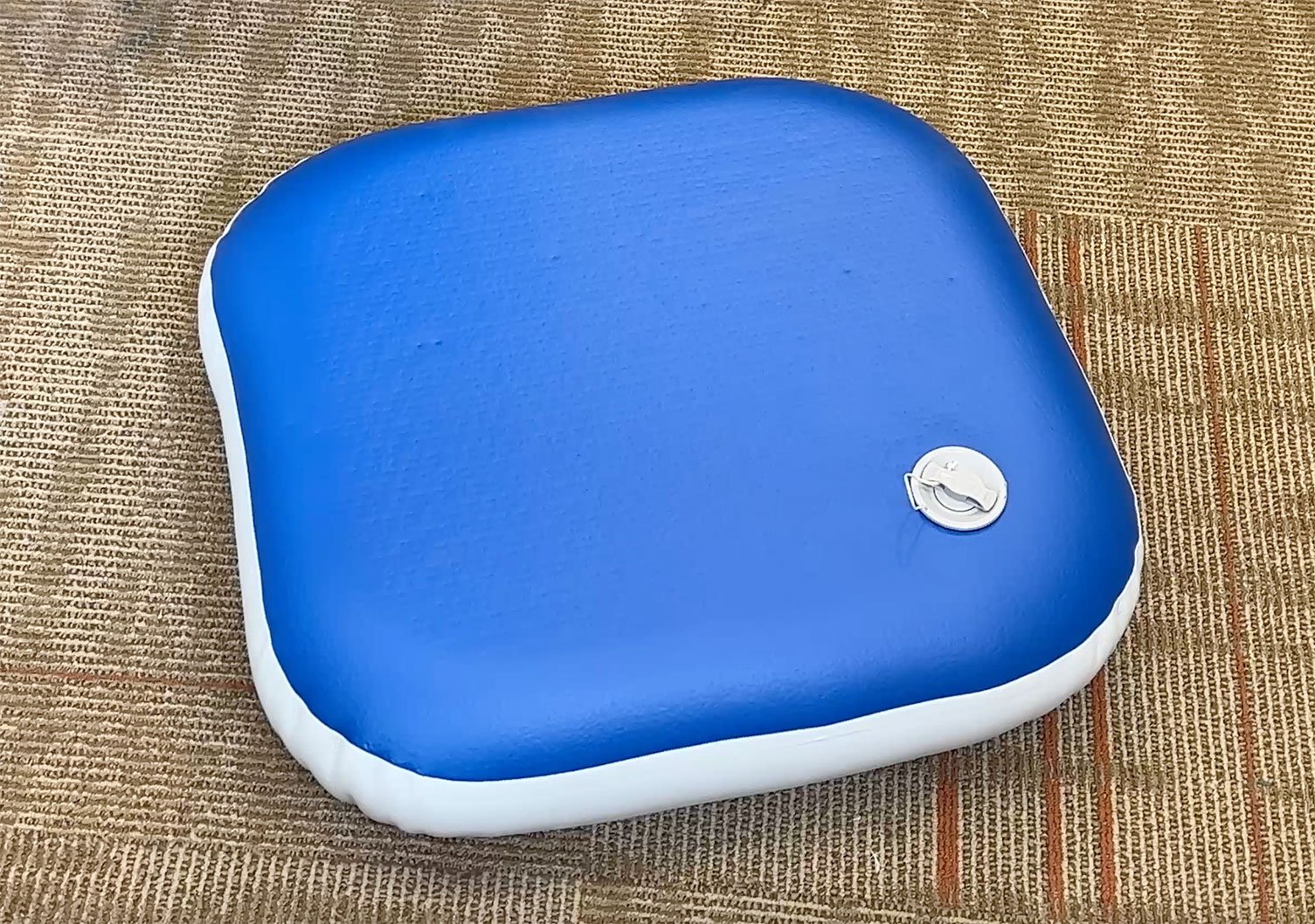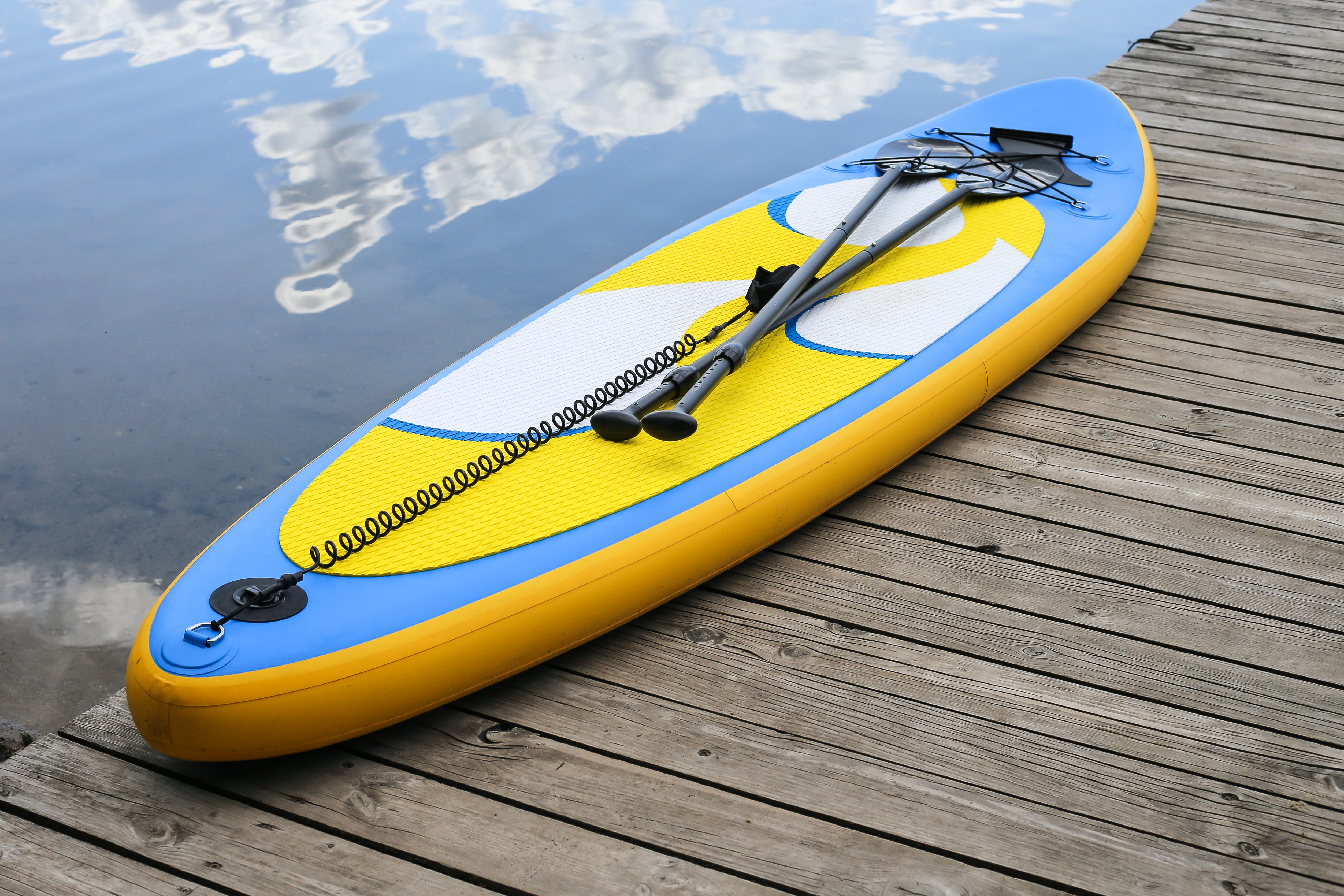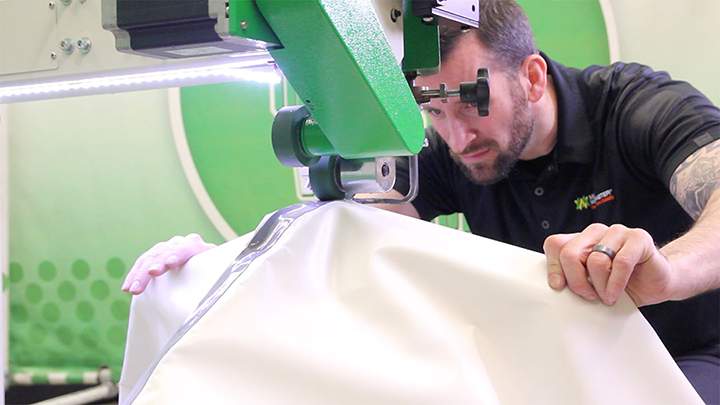What Is Drop Stitch Fabric and Why It Matters in Industrial Applications
Drop stitch fabric, also known as double-wall fabric, is a unique material engineered for strength and durability. It consists of two outer fabric layers connected internally by thousands of polyester threads. These threads maintain a fixed distance between the surfaces, allowing the fabric to inflate into a rigid, flat structure while remaining lightweight and compact when deflated.
This fabric is widely used in industrial and recreational applications such as inflatable SUPs (stand-up paddleboards), kayaks, gym mats, air tracks, tents, floating docks, and medical or military gear. It is also commonly used in the manufacturing of paddle boards and other inflatable products. What makes drop stitch fabric particularly valuable is its ability to withstand internal pressure while holding a precise shape—making airtight seam integrity vital.
Learn more about the materials used in these applications at Miller Weldmaster Double-Wall Fabric Page.
Benefits of Using Drop Stitch Fabric in Manufacturing
Drop stitch fabric offers a unique balance of lightweight and durability, making it highly efficient for various manufacturing needs. It deflates into a compact form, allowing for easy transport and storage while maintaining its rigidity and form under high internal pressure. The precise cutting of patterns and the appropriate thickness of the material are crucial for ensuring clean, straight edges and optimal performance. This makes it ideal for industries requiring products that must be both portable and structurally sound. Additionally, its use is expanding rapidly due to the increased demand across sectors such as recreation, defense, and emergency response.
Why Welding Is the Preferred Method for Drop Stitch Fabric Assembly
Compared to adhesives or stitching, industrial welding offers superior durability, speed, and reliability. Adhesives degrade over time due to UV exposure and environmental stress, while stitched seams often allow air or water leakage through needle holes. Among the various methods, the high frequency welding machine stands out for its precision and efficiency in the plastic welding and packing industry.
In contrast, welding—particularly hot air welding—fuses the thermoplastic layers into a single continuous bond, resulting in airtight and watertight seams that withstand repeated use and environmental stress. This process is enhanced by hot air technology, which melts and fuses fabric layers, creating strong, durable bonds essential for manufacturing inflatables, paddle boards, and gym mats.
Types of Welding Techniques for Drop Stitch Fabric
Hot air welding is the most commonly used method due to its precision and versatility. It applies heated air and pressure to seamlessly bond the layers. A hot air welding machine is specifically designed for welding double-wall fabrics, such as inflatables and gym mats, offering precise temperature control and user-friendly interfaces. Hot wedge welding functions similarly but uses a heated metal wedge to generate the necessary temperature, offering excellent control for straight seams. RF welding, or radio frequency welding, is another technique used primarily with PVC materials. While not as widely used for drop stitch, it may be suitable for certain applications. Each method has specific advantages depending on the production scale, material type, and performance requirements.
Best Practices for Welding Drop Stitch Fabric
Proper handling of drop stitch fabric is essential to achieving strong, reliable seams. Always start by thoroughly cleaning the fabric surface to remove dust, oils, and any contaminants that could interfere with the bond. Next, align the fabric properly so that the internal threads remain in the intended direction, which helps prevent distortion and maintains structural integrity. Additionally, incorporating an anti-twist groove can facilitate this alignment process, ensuring consistent and accurate results.
Running test welds with scrap fabric before starting full production is a critical step. It helps fine-tune settings and ensure the process is dialed in correctly for the specific material batch being used. This step also allows for easy length adjustment, which is crucial for maintaining the integrity of welded products. To further enhance accuracy and quality control, consider integrating SeamVision, Miller Weldmaster’s advanced seam monitoring system. SeamVision uses high-resolution infrared cameras and precision analytics to detect seam defects in real time, helping operators identify issues like missed welds, misalignments, or inconsistencies as they occur—ultimately reducing scrap, improving output quality, and increasing operator confidence during drop stitch fabric welding.
How to Ensure Airtight and Watertight Seams
Use equipment that allows for consistent temperature and pressure control to avoid variations in seam strength. Ensure that the fabric has a proper overlap—typically around one inch—which is critical for creating a durable bond. This technique is essential for achieving air and water tight seams. During production, conduct regular quality inspections and tensile strength tests to identify any weak points early. Utilizing high quality components can significantly enhance the performance and longevity of your equipment. This proactive approach reduces the chance of failure in the field.
Choosing the Right Welding Machine for Drop Stitch Fabric
Success in drop stitch product manufacturing often comes down to selecting the appropriate equipment. Machines that offer precise temperature control, adjustable pressure settings, and user-friendly automation deliver higher productivity and superior seam quality. For small-scale manufacturers, a manual or semi-automated welder may be sufficient. However, businesses aiming for large production volumes should consider machines with fully automated capabilities and programmable settings to enhance consistency and speed. Additionally, opting for a complete machine that comes pre-configured and ready for operation can significantly reduce setup time and increase efficiency.
Choosing the right machine also involves considering the support available. A professional technical team can provide comprehensive support for installation, training, and maintenance, ensuring optimal machine performance. This team not only assists during the initial setup but also offers lifelong technical support, underscoring their commitment to client success throughout the production process.
Top Machine Features to Look For
Digital control systems are crucial for fine-tuning temperature, speed, and pressure, which directly impact seam strength and appearance. Weld heads that can be adjusted in terms of positioning allow for versatile seam types, including curves and angles. Customizable features such as arm length are essential for accommodating different product sizes and enhancing the machine's versatility. Seam tracking systems help maintain weld line accuracy, even on complex shapes. An English interface, often through a PLC/HMI touch screen, provides an easy-to-use operational experience, vital for precise temperature control. Additionally, machines capable of handling various thermoplastic materials increase flexibility in product development and future expansion.
Miller Weldmaster Machines Ideal for Drop Stitch Applications
Miller Weldmaster is a global leader in industrial fabric welding, offering decades of experience and machine innovation. Our equipment is trusted across industries for its durability, flexibility, and performance. Among our range of solutions, the high frequency welding machine stands out for its role in the plastic welding and packing industry. For drop stitch applications, our T300 Extreme Curve is specifically designed to handle double-wall fabrics with curved and complex seams. Its hot air system is ideal for creating airtight seams in inflatable and structural products. We also provide comprehensive support services, including installation, to ensure our clients can effectively utilize their machinery with maximum efficiency and minimal disruption.
Real-World Use Cases and Machine Performance
Industries such as recreational inflatables, military shelters, medical emergency gear, and water sport equipment manufacturers depend on the T300 Extreme Curve for its ability to produce accurate, consistent, and high-quality welds. The machine supports high-speed production, allowing hundreds of linear feet of seams to be welded per hour. With digital controls, each seam can be fine-tuned to meet exact specifications, and its durable components ensure minimal downtime. Users consistently report high satisfaction with seam consistency, machine uptime, and the level of service provided by the Miller Weldmaster support team. Regular maintenance is crucial to ensure the machine operates at peak performance and reliability.
If you’re looking to upgrade your process, consider speaking to our technical team or browsing through our customer success stories. Our engineer overseas service provides installation, maintenance, and technical support to ensure your machines meet all your welding needs.
Advancing Your Drop Stitch Fabric Welding Process
Precision and consistency are critical in drop stitch welding. Whether you’re building inflatable SUPs or military-grade platforms, adopting the right techniques and equipment ensures long-lasting performance and customer satisfaction. We have covered what drop stitch fabric is, why welding is the preferred joining method, and what machine features matter most. By following best practices and selecting the right tools, manufacturers can achieve exceptional product quality while improving production efficiency. Our advanced technology, including innovative methodologies and processes, further enhances product durability and environmental sustainability.
If you’re ready to take your production to the next level, explore Miller Weldmaster’s machine line and connect with our technical experts for tailored advice and solutions. For any assistance or inquiries regarding your fabric welding needs and machine options, please contact us.
Frequently Asked Questions About Drop Stitch Welding
What is drop stitch fabric and why is it used in inflatables?
Drop stitch fabric consists of two layers of woven polyester joined by thousands of internal threads. It allows inflatables to maintain a rigid structure when inflated, making it ideal for SUP boards, kayaks, and inflatable docks.
Can drop stitch material be glued instead of welded?
While gluing is possible, it is not ideal. Adhesives degrade over time and often fail to provide a consistent airtight or watertight bond. Welding is more reliable for long-term durability.
What welding techniques are best for drop stitch fabric?
Hot air welding is the most common and effective method, offering precision and speed. Hot air heating plays a crucial role in controlling temperatures for creating strong and durable bonds in double-wall or drop-stitch fabrics, especially in manufacturing inflatable products. Hot wedge welding is also suitable. RF welding is less common but used for specific materials like PVC. A high frequency welding machine is often highlighted in the plastic welding and packing industry for its quality, customization, and after-sales support.
Which Miller Weldmaster machine is best for my drop stitch application?
The T300 Extreme Curve is our top recommendation. It is designed specifically for curved and structural seams in drop stitch fabric, offering precise control and consistent results. The machine incorporates high quality imported components from reliable brands like Japan Panasonic and OMRON, ensuring enhanced performance and longevity.
In addition to its superior machine performance, we provide comprehensive services including installation and packing production. Our professional team offers on-site installation and support, aiming for optimal machine performance and seamless operation of your production lines.
How do I ensure quality control when welding drop stitch fabrics?
Use machines with digital controls, perform regular tensile strength tests, ensure proper seam overlap, and inspect welds for uniformity. Providing details on these processes helps customers understand the full scope of quality assurance measures.
Regular operator training also plays a key role. Ensuring that each complete machine is preconfigured and ready for operation minimizes setup time and enhances efficiency.




